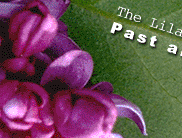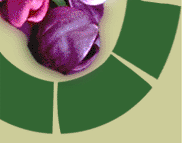





 | |||||||||||
|
|||||||||||
 | |||||||||||
|
The Colour Purple Horticulturists assign a colour code to flowers by holding them against a neutral background in natural light, then matching them to a palette of special colour chips similar to those we use to buy paint. While lilacs may be described using these colour codes, they are actually classified into seven categories. |
More than just purple Lilacs bloom for a short period each spring, and many cultivars only bloom heavily in alternate years. You can add ongoing interest to your garden by choosing cultivars with unusual leaves that have horticultural value of their own, such as 'Chantilly Lace' and 'Dappled Dawn'. |
|||||||||||||||||
|
The elusive yellow lilac There are no yellow-flowered lilac species, and so yellow cultivars were believed impossible. However, Dutch horticulturist, Gerrit Maarse, found and rooted a spontaneous bud mutation (sport) on a sample of the white lilac 'Marie Legraye' that was forced for cut flowers. The new lilac was named 'Primrose' for its creamy yellow-green buds and pale yellow-cream flowers. Today it is used to breed new yellow cultivars. |

|
|||||||||||||||||
|
Some things get better with age As a lilac bush ages its flower colour may intensify, however, as a floret ages its colour may fade. Lilac flowers open from the bottom of the cluster to the top — do you see a difference when you compare the colour of older and newer florets on any of these lilacs? Non-permanent colours Classifying the colour of lilac blooms is challenging because flower colours vary for many different reasons: Weather Cool, damp weather deepens and intensifies colour, while hot sun fades blooms. This is especially true for deeply coloured lilacs, which fade when grown in full sun. |
Stage Varying concentrations of pigments in the outer and inner cell layers of the petals may cause hues to change as the buds swell and open. After opening, colour may change as the flowers age. Soil type Regional differences in soil structure and chemical composition create slight differences in tint and hue. Lighting Purple is a combination of both red and blue reflected light, and so colour varies depending on the quality of light. Colour may be different in sun and shade, or in morning and afternoon light. |
|||||||||||||||||
 |
||||||||||||||||||
| ||||||||||||||||||
|
||||||||||||||||||
 Introduction
Introduction